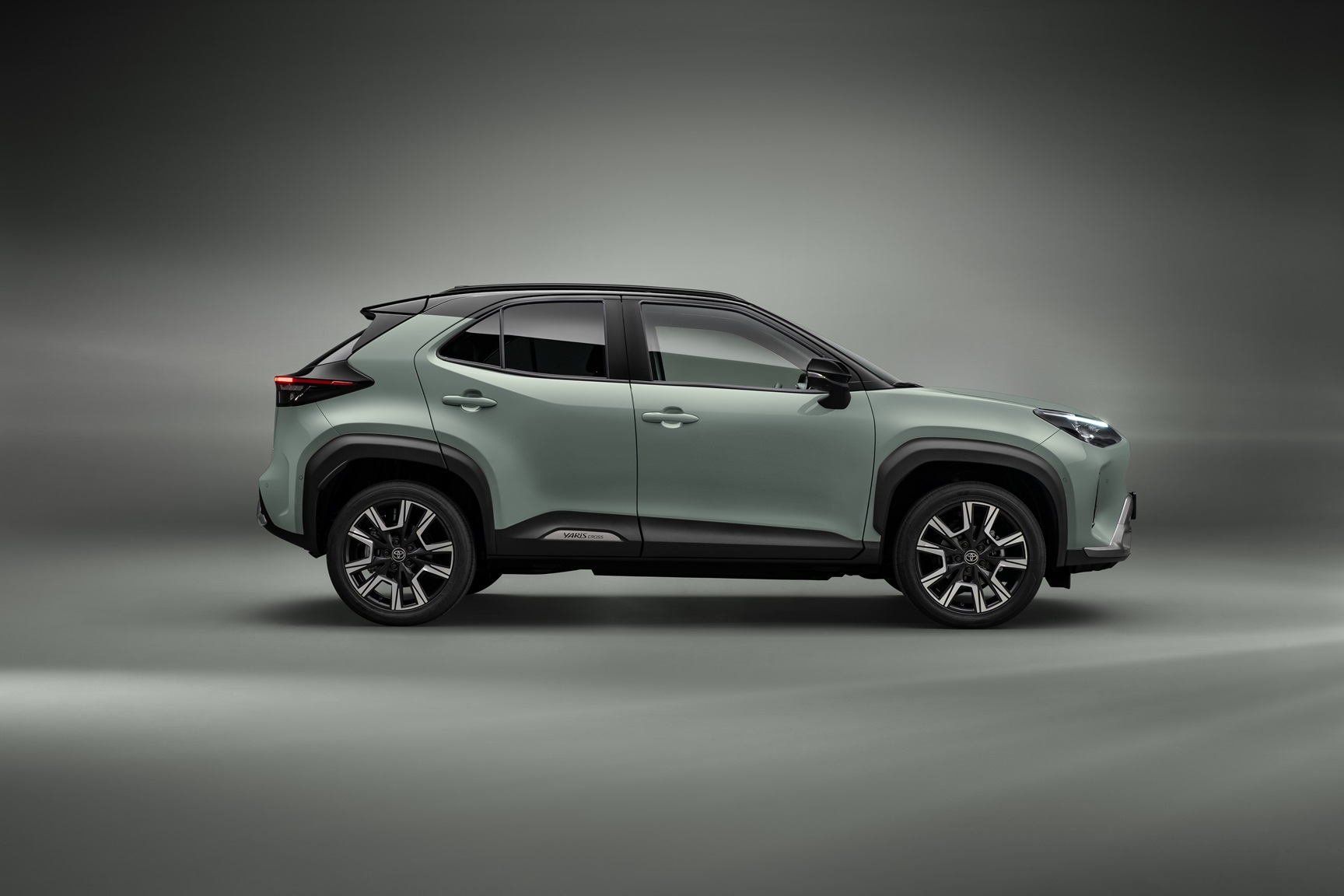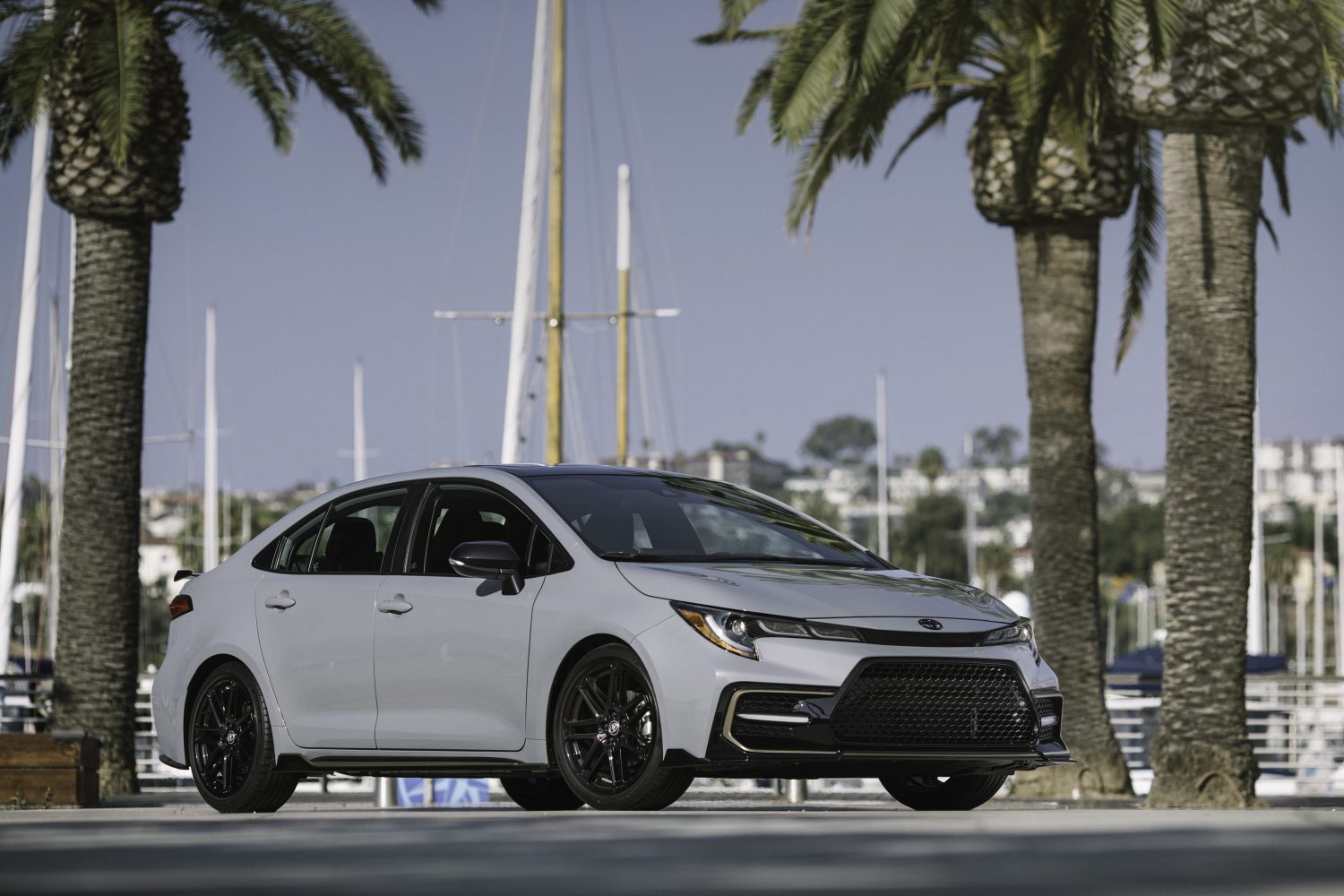For some time now, Toyota has been preparing the automotive world for the introduction of the second generation of the stylish C-HR compact SUV. It was heralded by the C-HR Prologue concept late last year, but the question remained as to how closely the production car would adhere to that design. Now the Toyota C-HR 2024 is officially out, and it has to be said that it’s virtually unchanged from the concept – the redesigned small crossover icon is the “super coupe” of the future.
The development of the next-generation C-HR was mostly done in Europe, and surprisingly, it will even be produced here. Despite the model’s great popularity, it will have no shortage of competition – just mention the Japanese Nissan Juke, the Ford Puma or the Czech Skoda Kamiq.
The Toyota C-HR is a model developed for European customers and comes in its second generation. For comparison with a similar crossover, you can check out our review of Toyota Yariss Cross. The C-HR is more focused on styling and relies on a distinctive look.
What Toyota C-HR 2024 reviews agree on
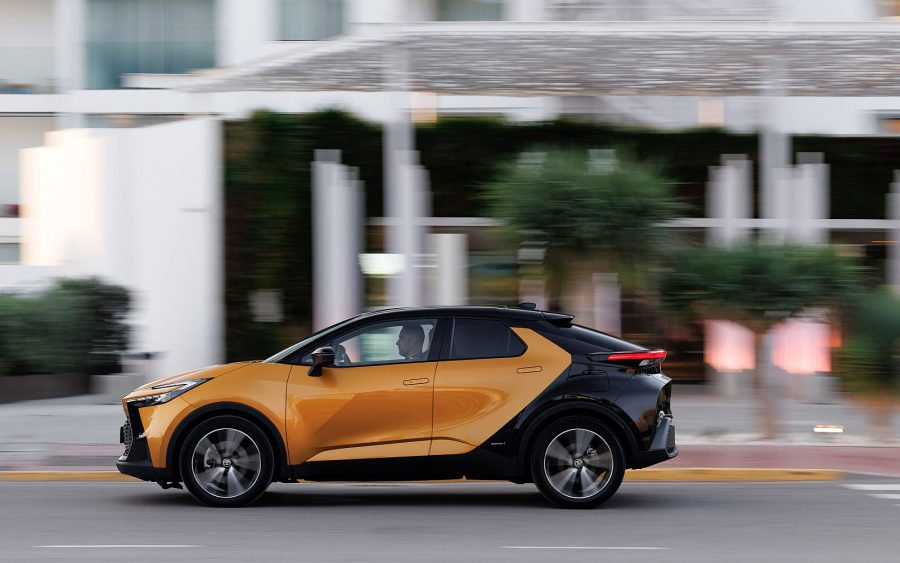
Futuristic Design too bold?
Dimensionally, the car is almost identical to its predecessor (just 3 cm shorter and wider), but design-wise, it’s almost a bit of a revolution. The cheerful and funky look of the previous generation has been replaced by modernity and sleekness, and the influence of the brand-new Prius is very evident here.
The engineers decided to hide the car’s cameras or radar and even the headlight washers so that they don’t interfere with the overall shape of the car. For the same reason, the exterior mirrors, for example, are mounted on the doors rather than on the A-pillar.
The 17-20-inch wheels with a large wheelbase give the car a staggered stance, and there is no shortage of stylish two-tone body paintwork. Unmissable are the C-shaped headlights extending into the front grille, while the taillights then form a strip stretching the full width of the rear.
It’s clear, however, that such a bold design will be polarising: haters will argue that the car is too busy with shapes and, despite the presence of 20″ wheels, gives a short and tall impression – and the black rear certainly doesn’t help. And they’d be right.
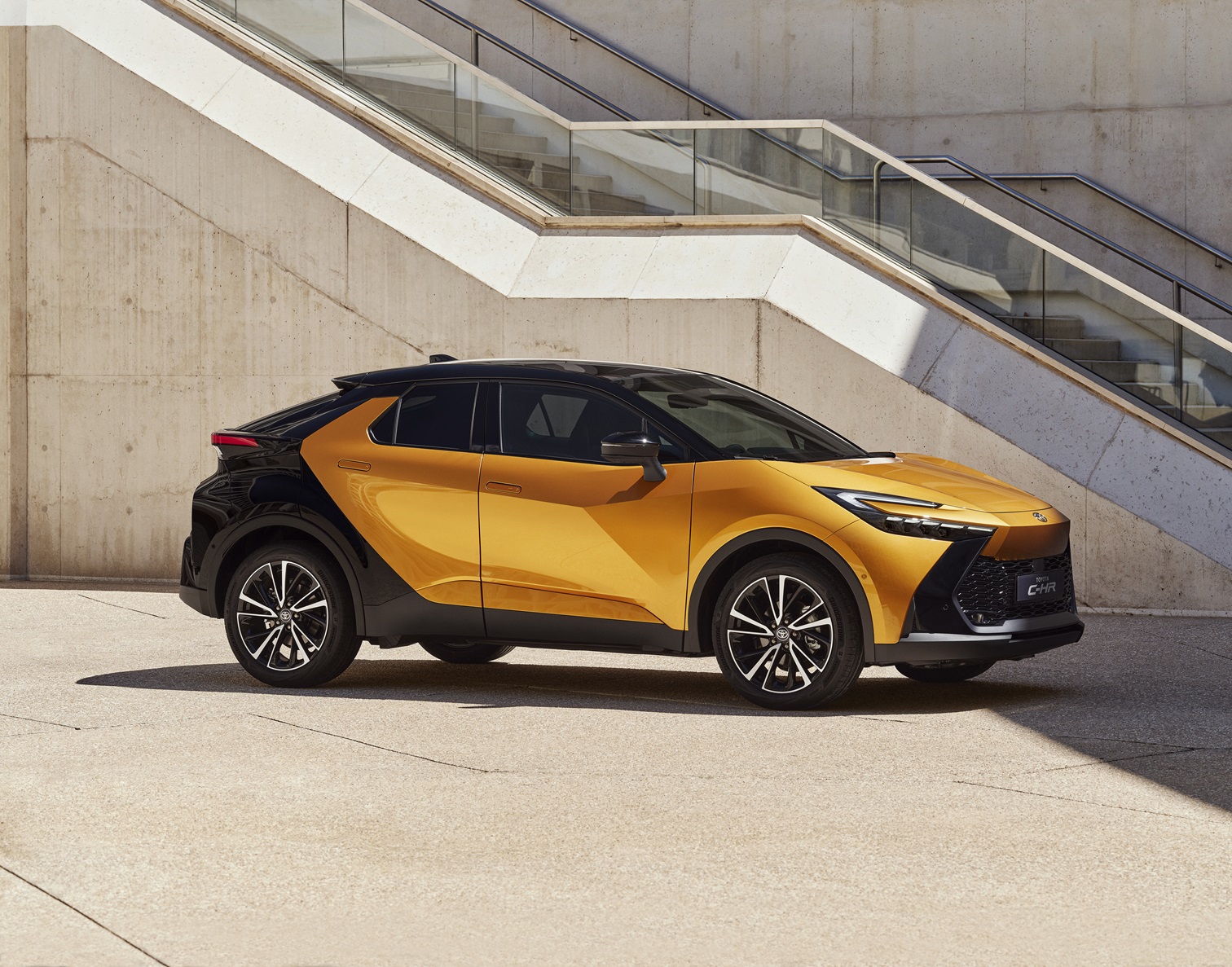
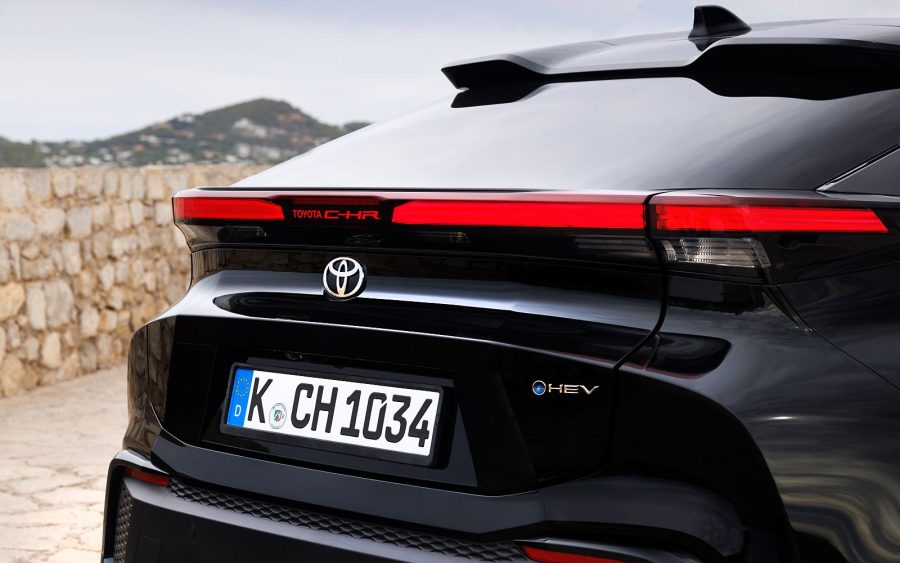
Interior is functional and better designed
The pride of the outgoing C-HR was the interior, among other things, and the new one seems to have successfully followed up. However, the interior is more luxurious than before. It could wear the Lexus logo. The materials and workmanship are topnotch and everything you normally touch is soft and pleasant to the touch.
The cockpit is airier with more light. Although the rear body pillar is still quite thick, the rearward slanted view isn’t as bad as it used to be. The C-HR still isn’t inflatable, though, and will serve mainly couples or as a second car to the plane. The buying power is there anyway.
A large 12.3-inch instrument cluster shines through the three-spoke multi-function steering wheel, then a central touchscreen of the same diagonal dominates the entire interior. An interesting (and welcome) fact is that, despite current trends, Toyota hasn’t completely abandoned traditional buttons, so analogue switches are used to control frequently used functions,
In the top versions, you’ll find ambient backlighting in 64 colours, a JBL audio system and a panoramic roof. According to Toyota, the glass roof reflects infrared rays so you don’t crank up the air conditioning on warm days and keeps the cabin warm in winter. There’s no need for a retractable roller blind, saving three inches of headroom in the back.
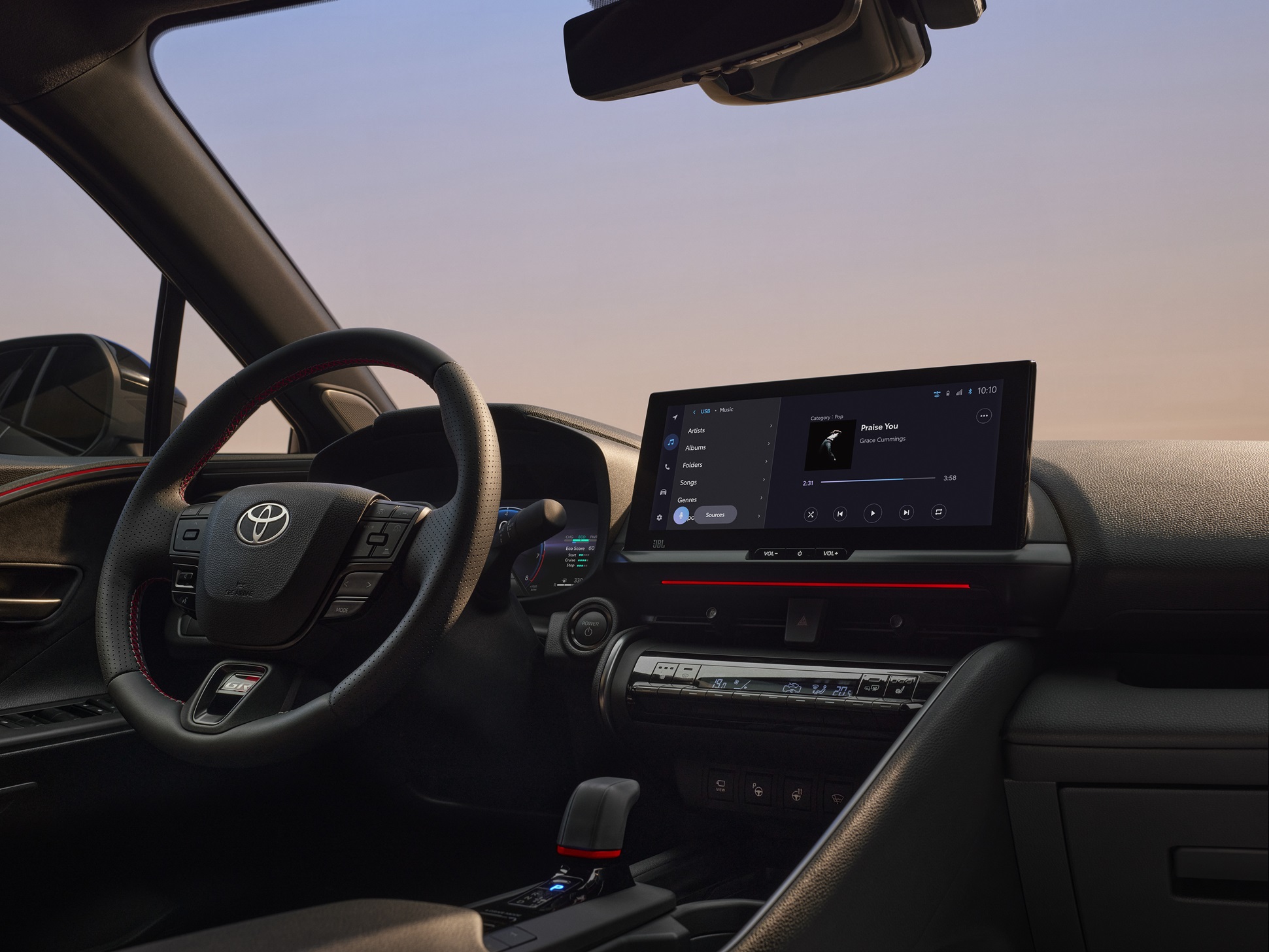
It’s all hybrid
The car is based on the GA-C platform, which boasts high rigidity, lightness and awesome handling characteristics. In Europe, the new C-HR will have an all-hybrid powertrain under the bonnet. You won’t find a conventional petrol engine in the range, but the plug-in hybrid powertrain from the new Prius has been added. And the ‘by wire’ four-wheel drive isn’t just for getting around town. The rear electric motor has a high output of 33kW.
The hybrid system works with an atmospheric 18-cylinder engine and a total output of 140 hp, which will power only the front wheels. It can reach 60 mph in 9.9 seconds and has a top speed of 170 km/h.
The downsized turbo engine has disappeared from the range. But there is the powerful 198 hp two-litre, which is the optimal motorisation for the car. It can reach 60 in 8.1 seconds (FWD) or 7.9 seconds (AWD). However, it’s no longer the top model; its role is taken over by the two-litre plug-in hybrid, whose 223 hp, 7.4-second acceleration, 180 km/h topspeed and 66 km electric range speak for itself.
The petrol tank has a capacity of 43 litres in all versions.
Technology
In Toyota C-HR 2024 you’ll find an army of assistance systems for semi-autonomous driving and driver support, app control or lights that automatically cover surrounding cars. Interestingly, the ambient lighting adjustable flashes red if a collision with a car or cyclist is imminent when the doors are opened. A nice feature, on the other hand, is a program that changes the color of the lighting every hour of the day, from bright morning tones to warm evening and nighttime colors.
Toyota C-HR 2024 specifications
- Power: 103-145 kW
- Price: €36,000 for 1.8 Hybrid, €58,000 for Plug-in Hybrid with Executive Premiere Edition trim.
- Fuel consumption: 4,8-4,9 l/100 km
- Top speed: 170 km/h
- Boot space: 310 (388) l
- Fuel tank capacity: 43 l
- Curb weight: 1 465 kg
- Length: 4 360 mm
- Width: 1 830 mm
- Height: 1 558 (1 564) mm
- Wheelbase: 2 640 mm
Interesting Toyota C-HR 2024 reviews
Auto Express: Toyota C-HR 2024:crossover hit returns with new funky stylings
Drive.com 2024 Toyota C-HR review, price and specifications
Autocar detailed 2024 Toyota C-HR pros and cons summary

